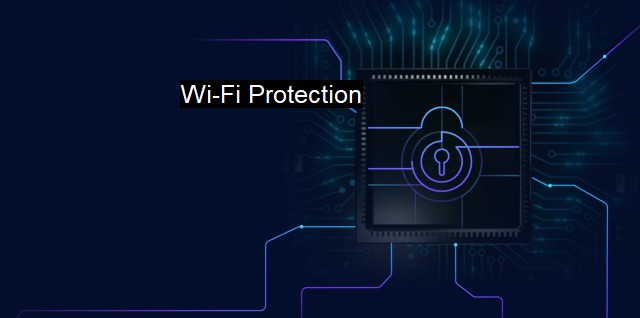What is Wi-Fi Protection?
The Importance of Wi-Fi Protection: Safeguarding Networks against Unauthorized Access and Cyber Threats
Wi-Fi Protection forms a critical component in the broad domain of cybersecurity and antivirus. As technology continues to advance at a rapid pace, ensuring the safety and security of Wi-Fi networks has become a mounting concern. Exploring the concept of "Wi-Fi Protection", we come to understand the prominent role it plays in establishing and maintaining secure, reliable digital environments.The term "Wi-Fi Protection" refers to measures that secure a wireless network from unauthorized access or attacks. More often, wireless networks often become the focal point of infiltrations largely because devices usually share data primarily through Wi-Fi connections. This implicates a larger scope for prospective threats and vulnerabilities to creep in, making Wi-Fi protection vital in safeguarding the integrity, confidentiality, and accessibility of data.
Key to robust Wi-Fi protection would be the implementation of Wi-Fi Protected Access (WPA), now available in its third iteration; WPA3. WPA was designed as a response to the vulnerabilities found in the original Wi-Fi security protocol, Wired Equivalence Privacy (WEP). The purpose of WPA is to ensure data protection and network access control for devices using Wi-Fi. It delivers a level of security close to what is often available in a wired beast of comparable technology.
In considering other layers to Wi-Fi protection, encryption features as a principal component. Encryption jumbles the data being sent over the network into an unreadable format to ensure that even if a malicious actor were to gain access, they would not be able to decipher the content. Modern Wi-Fi networks usually use either WPA2 or WPA3, each offering specific protocols for encryption. These include Advanced Encryption Standard (AES) - a global cryptography standard that can prevent even the most stealthy cyber attacks.
Another major aspect of Wi-Fi protection is the use of solid, multifaceted passwords. While this might seem like cybersecurity 101, weak or easily guessable passwords are still a common entryway for cyber threats. Strong, unique passwords, ideally in conjunction with a second form of authentication (two-factor authentication, for example), significantly augment the security standing of a Wi-Fi network.
Wi-Fi protection also incorporates the constant upgrading and patching of Wi-Fi equipment. This is because cyber threats are ever-evolving; hence, Wi-Fi routers and the related architecture should always be equipped with the latest firmware updates to maintain the highest levels of security. Perhaps just as important, is the necessity to disable remote management of Wi-Fi network devices which prevent external bodies from potentially altering settings and gaining undue control.
Firewalls, either offered as built-in aspects of operating systems or as stand-alone entities, exist as another bid to secure Wi-Fi networks. They serve to monitor incoming and outgoing network traffic based on an organization’s previously determined security protocols. Firewalls act as barriers between an internal network and incoming threats from external sources.
The relevance of Wi-Fi protection extends to antivirus software also, which plays a dynamic role in the mitigation of system risk. By scanning and thwarting malware at a microscopic level, antivirus systems further entrench the sanctioning of complete Wi-Fi protection, contributing actively to a more secure, well-rounded wireless network.
Wi-Fi protection is an absolute must in today's increasingly networked world. The cybersecurity landscape will keep evolving indefinitely, and as unique risks and threats emerge non-stop, protecting the fundamental horizons of Wi-Fi can be complex, requiring acute attention & adaptability. To combat this, equipping a Wi-Fi network with protection features such as sophisticated encryption protocols, stringent passwords, updated firmware support, firewalls and antivirus assistance elevate its safety quotient immeasurably. Respecting the integrity and importance of data protection only reinforces the significance across all digital landscapes - and Wi-Fi protection stands at the helm of that frontier.

Wi-Fi Protection FAQs
What is Wi-Fi protection?
Wi-Fi protection refers to measures taken to secure a wireless network from unauthorized access and cyber attacks. It involves configuring security settings on your Wi-Fi router and devices, using strong passwords, and installing anti-virus software to protect against malware and other threats.How can I protect my Wi-Fi network from hackers?
To protect your Wi-Fi network from hackers, you should change your default router password, enable WPA2 encryption, disable remote management, and change the network name to something unique. You should also regularly update your router firmware and use anti-virus software to safeguard against malware and other cyber threats.What are some common Wi-Fi security risks?
Some common Wi-Fi security risks include weak passwords, outdated router firmware, lack of encryption, open networks, and unsecured devices. Hackers can exploit these vulnerabilities to gain access to your network, steal confidential information, and spread malware.Do I need anti-virus software for my Wi-Fi network?
Yes, you should always install anti-virus software on your Wi-Fi network to protect against malware and other cyber threats. Anti-virus software can detect and remove viruses, worms, trojans, and other types of malware that may infect your devices and compromise your network security. It is an essential tool for safeguarding your online privacy and preventing cyber attacks.| | A | | | B | | | C | | | D | | | E | | | F | | | G | | | H | | | I | | | J | | | K | | | L | | | M | |
| | N | | | O | | | P | | | Q | | | R | | | S | | | T | | | U | | | V | | | W | | | X | | | Y | | | Z | |
| | 1 | | | 2 | | | 3 | | | 4 | | | 7 | | | 8 | | |||||||